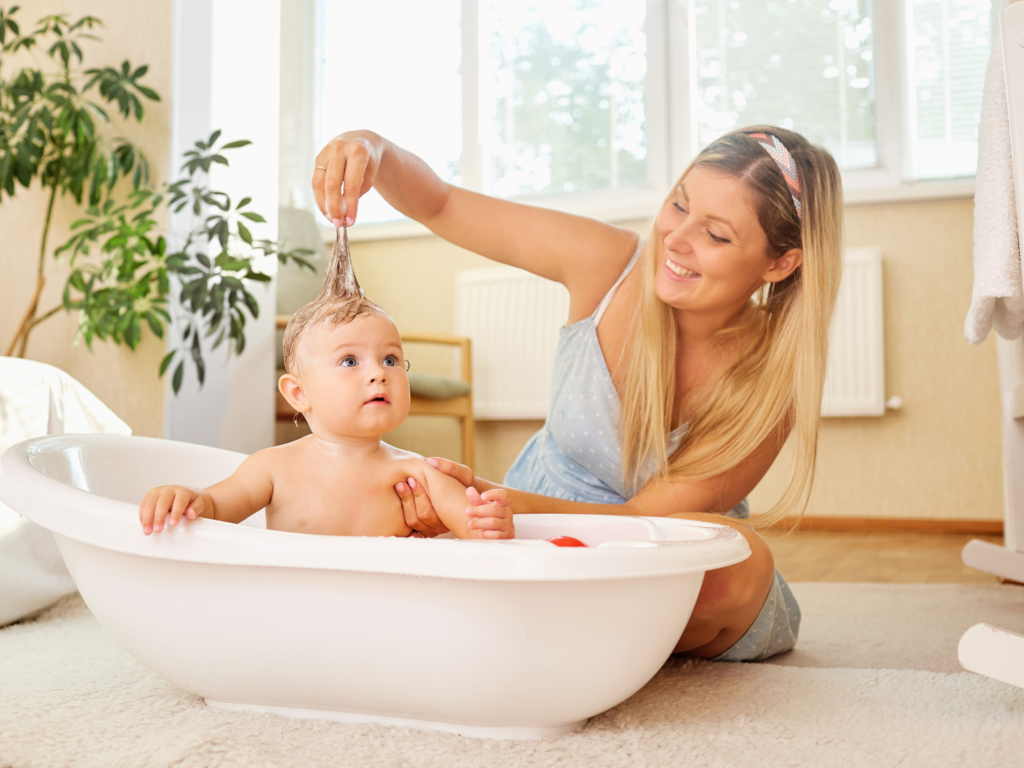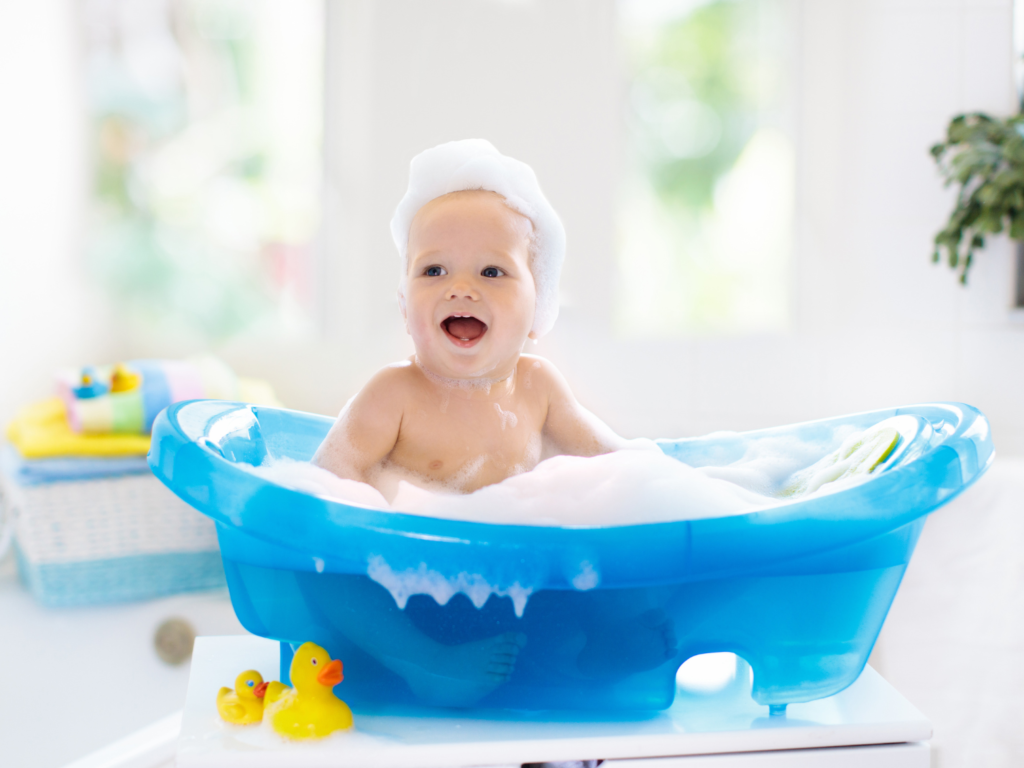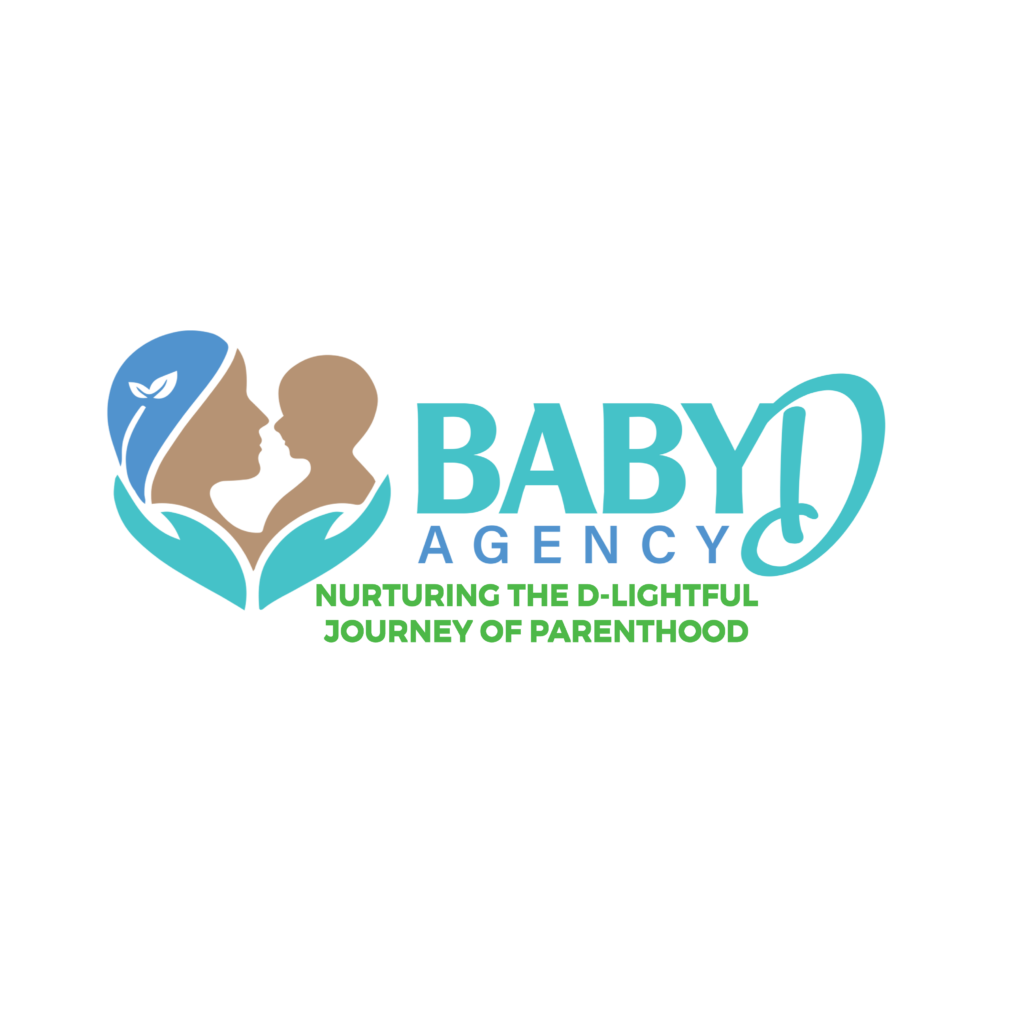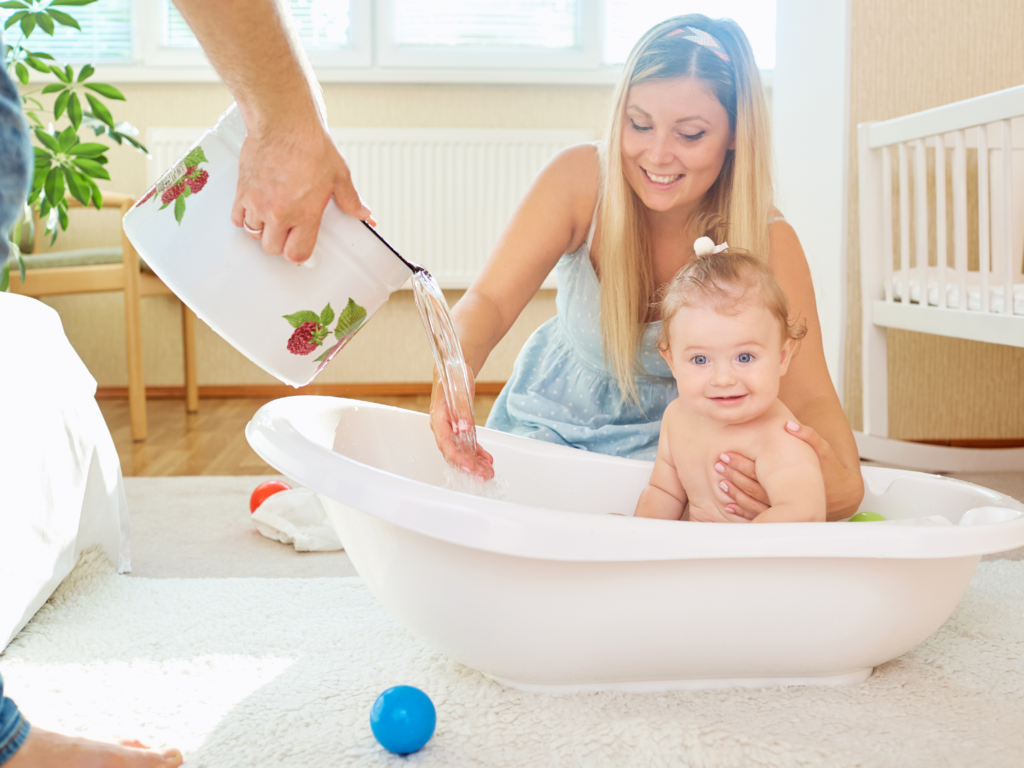Giving your newborn baby their first bath can be an exciting yet nerve-wracking experience for any parent. As a new mom myself, I remember feeling anxious about handling my slippery, squirming infant during that initial bath time. However, with the right preparation and techniques, you can make your baby’s first bath a safe, special bonding time for both of you.
In this blog post, we’ll go over the basics of bathing your newborn, from understanding its importance to step-by-step instructions. You’ll also find tips for making bath time enjoyable and answers to some frequently asked questions from new parents.
Why Bathing Baby is Important
While newborns don’t get dirty, there are several benefits to bathing them regularly:
- Removes vernix caseosa – This white, cheese-like substance coats and protects the baby’s skin in the womb. Though vernix is not harmful, gently washing it away helps reveal your baby’s soft new skin.
- Cleanses skin – Your newborn’s skin may have blood, meconium (early stool), and other fluids on it from delivery. Bathing helps get rid of these substances.
- Comforting for baby – The warm water and skin contact during bath time are calming and comforting for your little one.
- Opportunity for bonding – Bath time is a great chance for you to make eye contact with your baby, talk or sing to them, and gently touch/massage them. This helps build the parent-child bond.

When to Give Baby Their First Bath
Most experts recommend your baby’s first bath take place:
- Within the first 24 hours after birth – This initial wash-up while you’re still in the hospital or birth center helps remove vernix, blood, and meconium from your newborn’s skin.
- After the umbilical cord stump has fallen off – The stump dries up and detaches around 1-2 weeks after birth. Until then, sponge baths are best to avoid getting the area wet.
- Once the umbilical cord has healed – You can begin using an infant tub or sink for baths as soon as the stump has fallen off and the skin looks fully healed.
Preparing for Baby’s First Bath
To get ready for bath time with your newborn:
- Gather supplies – You’ll need a few essentials like a baby tub or sink, warm water, mild baby wash, soft towels, and a fresh diaper and clothes.
- Make sure the room is warm – Newborns get chilled easily, so be sure the room is warm with no drafts. Consider turning up the thermostat.
- Test water temperature – Dip your elbow in the bathwater to ensure it feels lukewarm, not hot. Aim for around body temperature.
Step-by-Step Bath Instructions
Follow these tips for safe, successful newborn bathing:
Before the Bath
- Undress baby completely except for the diaper – Removing all clothing allows you to easily wash every part of your baby’s body. Leave the diaper on initially to avoid messes.
- Grab supplies and bring them to the changing table/bath area – Have everything you need within arm’s reach so you’re not scrambling during the actual bath.
During the Bath
- Hold baby securely at all times – Keep one hand on your baby, cradling their head and neck at all times for support and security.
- Gently wash your face, head, and body with water and mild cleanser – Use a soft washcloth to gently cleanse your baby’s delicate skin. Avoid getting soap in their eyes.
- Shampoo scalp if desired – You can use a tiny amount of mild baby shampoo to wash your newborn’s fine hair if it looks particularly greasy.
- Carefully clean diaper area – Remove the soiled diaper, then use water, cotton balls, and mild cleanser to gently wipe your baby’s bottom if needed.
- Rinse thoroughly with warm water – Make sure you rinse off all soap with plain water so it doesn’t dry out their skin.
After the Bath
- Dry baby off gently with a towel – Pat their skin dry instead of rubbing. Take care around creases and folds where moisture can collect.
- Put on clean diapers and clothes – Choose loose, comfortable clothes and avoid overdressing your newborn.
- Lotion may be applied sparingly – Moisturize dry patches if needed, avoiding the diaper area.

Tips for an Enjoyable First Bath
Here are some more pointers to make bath time pleasant for both you and your baby:
- Go slowly and talk/sing to baby – Take your time so you can be gentle and attentive. Chatting, cooing, or singing will help your baby feel calm and comforted.
- Ensure the bathroom is warm with no drafts – Again, your newborn will get cold and upset if the room is chilly, so keep it nicely heated.
- Use lukewarm water and test temperature – Hot water can scald your baby’s sensitive skin. Always check the temperature before immersion.
- Support baby’s head and neck – Cradle your infant’s delicate head and neck in the crook of your arm for security and stability.
- Keep sessions brief in early weeks – Limit first baths to 5-10 minutes until your baby becomes more accustomed to the process.
FAQs
How often should I bathe my newborn?
A: 2-3 times per week is plenty for a new baby. Their skin doesn’t get very dirty.
What kind of soap or shampoo should I use?
A: Opt for a fragrance-free, tear-free baby body wash, and shampoo specially formulated for infants.
How warm should the water be?
A: Test the water on your inner elbow – it should feel warm but not hot. Aim for around body temperature, 90-100 degrees F.
Is it OK to bathe an uncircumcised boy?
A: Yes, just be gentle when washing the genital area. Don’t force the foreskin back. Clean only what is visible.
What if my baby cries during bath time?
A: Stay calm, speak soothingly, and try to hurry through the rinse portion. Crying is normal at first until they become accustomed to baths.
When can I start using an infant tub instead of sponge baths?
A: Once the umbilical cord stump has fallen off and the skin is fully healed – usually 1-2 weeks after birth.
Conclusion
While new parents are often nervous about bathing their fragile newborn for the first time, hopefully, this article has provided you with helpful guidance and confidence. Preparing the space, supplies, and temperature along with taking it slowly and supporting the baby properly will get your little one squeaky clean in no time. Don’t be surprised if they protest at first – with routine, bath time generally becomes an enjoyable, bonding ritual. With the right approach, you’ll be able to keep your newborn fresh and happy.

